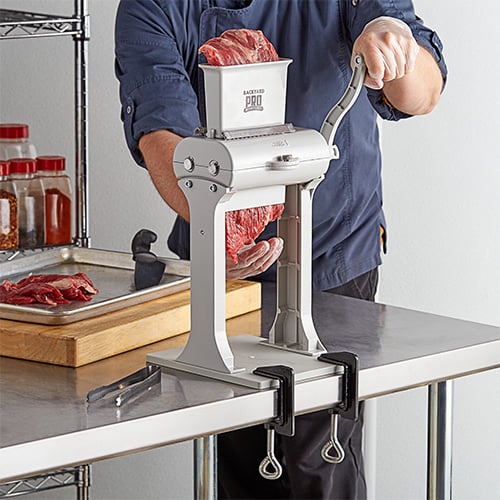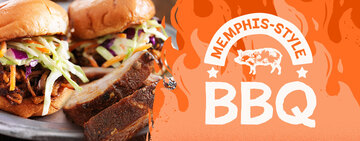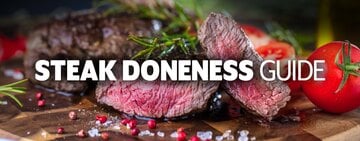Whether you're preparing different types of BBQ for a smokehouse or serving juicy steaks at a fine dining restaurant, understanding meat tenderizers and how to use them effectively can elevate your culinary creations to new heights. From manual hand-held tenderizers to electric-powered options, there are various types to choose from based on your specific needs and volume of meat preparation.
Shop All Meat TenderizersWhat Is a Meat Tenderizer?
A meat tenderizer is a kitchen tool designed to break down the tough muscle fibers and connective tissues in meat, making it more tender and easier to chew. There are two main meat tenderizing processes: mechanical and enzymatic. Mechanical tenderizers use force or blades to physically soften the meat, while enzymatic tenderizers utilize natural enzymes to impact the protein structure. Both types of tenderizers can improve the texture and flavor of various types of meat to create mouthwatering dishes that keep customers coming back for more.
When to Tenderize Meat
Tough cuts of beef, such as chuck roast, brisket, or round steak, benefit the most from tenderizing. Additionally, meats with thicker muscle fibers, like pork shoulder, can also be tenderized to improve succulence. A meat tenderizer can also be used to flatten pieces of chicken for dishes like chicken parmesan and chicken katsu. For optimal results, tenderize meat before marinating and cooking to allow the natural juices and seasonings to permeate through the meat, resulting in a more tender and flavorful end product.
Types of Meat Tenderizers
Meat tenderizers come in various forms to suit the needs of commercial kitchens. Each type offers unique benefits and is designed to tenderize different cuts of meat efficiently. Here are the main types of meat tenderizers commonly used in commercial settings:
1. Meat Mallet

A meat mallet, also known as a meat hammer, is a handheld tool with a flat or textured surface on one end. Chefs use meat mallets to manually pound cuts of meat to physically break down tough fibers and connective tissues, resulting in a tenderized product ready for cooking.
How to Use a Meat Mallet
To tenderize meat with a meat mallet effectively, follow these simple instructions. Practice kitchen safety by keeping your fingers clear from the descending mallet to prevent injuries.
- Start by placing the cut of meat on a sturdy surface and covering it with plastic wrap to prevent splattering.
- Using the textured side of the mallet, gently pound the meat to break down tough fibers and increase tenderness.
- For thicker cuts, use the flat side to even out the thickness for more uniform cooking.
- Repeat the process on both sides of the meat until it reaches the desired tenderness, being careful not to overdo it to avoid damaging the meat's texture.
How to Tenderize Meat without a Mallet
When a meat mallet is not on hand, there are alternative methods to tenderize meat effectively. A rolling pin can be used to flatten and tenderize cuts of meat by applying even pressure. Alternatively, a skillet or saucepan can be used to pound meat, breaking down tough muscle fibers for a more tender result.
2. Blade Meat Tenderizer

A blade meat tenderizer, or prong meat tenderizer, features a series of sharp blades or needles that pierce the surface of the meat. By creating small incisions, blade tenderizers help to soften tough cuts and allow marinades and seasonings to penetrate deeper, enhancing flavor and texture.
How to Use a Blade Meat Tenderizer
Follow these steps to tenderize meat with a blade meat tenderizer. It is important to use caution when using a blade meat tenderizer to avoid injury.
- Place the meat on a sturdy cutting board or work surface.
- Hold the blade meat tenderizer firmly in your hand and press the sharp blades into the meat. Use a consistent amount of pressure across the surface of the meat to create uniform perforations.
- Tenderize the meat in different directions, both vertically and horizontally, to ensure that the entire cut is evenly tenderized.
- For thicker cuts of meat, you may need to tenderize each side multiple times to achieve the desired level of tenderness.
3. Hand Crank Meat Tenderizer

Hand crank meat tenderizers are a type of manually powered meat tenderizer that utilizes a rotating crank to drive sharp blades or spikes into tough cuts of meat, breaking down connective tissues for a more tender texture. These tenderizers are ideal for commercial kitchens that use tenderized meat regularly on their menu, allowing chefs to process a batch of meat quickly with minimal effort and no sound disturbances.
How to Use a Hand Crank Meat Tenderizer
A hand crank tenderizer is easy to use and can help save time in your kitchen. Always prioritize safety and keep your hands and fingers away from the rotating blades while operating the device.
- Begin by preparing the meat for tenderizing by trimming excess fat and ensuring it is of the desired thickness.
- Adjust the blade thickness on the hand crank meat tenderizer according to the desired level of tenderness.
- Place the meat at the opening of the shoot at the top of the tenderizer.
- Turn the hand crank to feed the meat through the blades, which will tenderize it as it passes through.
- Repeat the process if necessary to achieve the desired level of tenderness.
4. Electric Meat Tenderizer

Electric meat tenderizers are powered machines that automate the tenderizing process, saving time and effort in commercial kitchens. These devices feature rotating blades or needles that pierce the meat quickly and efficiently. Often available with adjustable settings for thickness and speed, electric meat tenderizers offer consistent results and are ideal for high-volume operations such as restaurants, butcher shops, and catering businesses.
How to Use an Electric Meat Tenderizer
Use these steps to tenderize meat with an electric meat tenderizer. Remember to turn off the electric meat tenderizer when it is not in use.
- Before using an electric meat tenderizer, ensure that the meat is clean and trimmed of excess fat.
- If applicable, set the machine to the thickness and tenderizing intensity desired for the piece of meat you’re using.
- Turn on the electric tenderizer and feed the meat through the machine. The tenderizing blades or needles will spin and pierce the meat as it passes through.
- Depending on the thickness and toughness of the meat, you may need to run it through the electric tenderizer multiple times.
5. Chemical Meat Tenderizer

Chemical meat tenderizers are powders or liquids that contain enzymes such as papain or bromelain that break down protein molecules in meat, resulting in a tender texture. These tenderizers are often used in marinades or rubs along with salt, sugar, and flavorings to enhance the tenderness of tougher cuts of meat before cooking. Bromelain is derived from pineapples and is particularly effective on cuts of beef and pork. Papain is an enzyme extracted from papaya fruit and commonly used for tenderizing poultry and game meats.
How to Use a Chemical Meat Tenderizer
Use the following instructions to tenderize meat with a chemical meat tenderizer:
- Select the type of chemical meat tenderizer that best suits your specific application, whether it be powder or liquid.
- Carefully read the manufacturer's instructions on your chemical meat tenderizer. Different products may have varying application methods and recommended dosages.
- Sprinkle or rub the chemical meat tenderizer evenly over the surface of the meat. Ensure that all parts of the meat are covered to achieve consistent tenderization.
- Allow the meat to marinate for the recommended duration of time. Over-marinating or exposing the meat to extreme temperatures can lead to over-tenderization and affect the texture of the meat.
Meat Tenderizers FAQ
We answer some of the most frequently asked questions when it comes to understanding meat tenderizers:
How to Clean a Meat Tenderizer
Cleaning a meat tenderizer is essential to maintain food safety and prolong its lifespan. To clean a meat tenderizer, first disassemble the tool according to the manufacturer's instructions. Wash all parts in hot, soapy water, scrubbing off any food residue. Rinse thoroughly and sanitize with a food-safe sanitizer. Allow all parts to air dry completely before reassembling the meat tenderizer for future use. Regular cleaning and maintenance will ensure that your meat tenderizer remains hygienic and effective in tenderizing meat.
Should You Tenderize Steak?
Tenderizing steak can greatly enhance its flavor and texture, especially when working with choice or select grades of beef. Whether you are preparing a juicy ribeye or a tender filet mignon, using a meat tenderizer can help break down tough muscle fibers and create a mouth-watering dish.
Should You Tenderize Chicken?
While chicken cuts do not require tenderizing, this step can enhance the texture and flavor of the meat. Chicken breasts, in particular, can benefit from tenderizing to make the meat more tender and juicy. Using a meat tenderizer tool can also help achieve more even sizing between pieces of chicken and reduce cooking time overall.
Do You Need to Tenderize Pork Chops?
Pork chops are a popular cut of pork on many restaurant menus due to their versatility and flavor. While pork chops are already tender compared to other cuts of meat, tenderizing them can further enhance their texture and juiciness. Using a meat tenderizer on pork chops can help break down tough muscle fibers, making them easier to cut and chew. Whether you choose to use a manual meat tenderizer or a commercial meat tenderizing machine, the process can help ensure that your pork chops are consistently tender and delicious for your customers.
Whether you opt for a manual meat tenderizer mallet or a commercial meat tenderizing machine, these tools can significantly improve the quality of your dishes and increase customer satisfaction. Experiment with different tenderizing techniques and tools to find the best method that suits your kitchen's needs and elevates your culinary creations.



